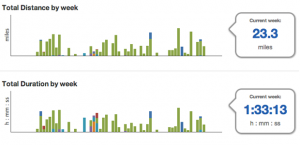There are as many freelancers as office workers when it comes to creative professions. It depends on the persons’ needs and expectations – some of them prefer independent projects, others perform better in a team. But no matter the workstyle they maintain, they all were affected by the pandemic for sure.
The same goes for creative professionals working in all the fields. Although many of them were used to work from home before, COVID-19 forced the others to leave their offices and get used to the new work environment. A year after the first lockdown, we’re insecure and fed up with this uncertain situation.
How to deal with it? Find out the simple yet effective productivity tips for content creators!
I’m entirely sure that many of you won’t find all of the tips I’ll provide as useful for them. Why? Because we’re all different! We maintain different workstyles and lifestyles, and we have different responsibilities and social situations.
However, I’ve been working remotely as a content designer for almost five and a half years, and honestly, I don’t know how to stay in the office during the entire workday. That’s why I only encourage and I won’t be disappointed if a particular one won’t suit you! And it would be nice of you if you share your experience in the comment section.
Please be careful that sometimes I refer to content creators as just “creative professionals” because the tips below would also apply to other professions.
I hope you’re ready!
Why should I care about productivity and tracking it?
Many of us are sure they don’t need any productivity app to organize their daily workflow. And I entirely know it’s hard to convince those who prefer traditional solutions to go digital. But I highly encourage you to at least give them a try, because they:
- Automate tedious tasks and save us much time during the working day,
- Help you keep all your online stuff in one place, neatly organized,
- Simplify the communication and collaboration processes,
- They are perfect for work quality improvement because they help you set and track your goals.
Use team collaboration tools
No matter if you’re a freelancer or a part of a bigger team, using collaboration apps is a game-changer. Instead of sending an endless chain of emails with clients and coworkers, keep everything in one place – from all your tasks and assignments, through conversations and feedback to files and attachments.
A proper collaboration tool should be packed with features helpful to communicate with both clients and (implied) teammates, like inviting others as guests to chat. The easy setup would be nice, although you can always ask the support for a live training if available.
For each client or team you’re a part of, you can create a separate virtual workspace. If the tool you choose is packed with a Kanban board, the better – treat each card as a task and keep all the attachments related to it. Also, note there the progress of your work, using notes or the progress bar if available.
Team collaboration tools automate the tedious processes, leaving us more time for being creative!
Here are some I can recommend after years of using them:
HeySpace
A Slack and Trello baby, combines Kanban-based task management and group conversations/private messages. Turns each message into a task.
Clickup
Easy to use task management tool with a clear user interface and transparent project organization.
Trello
Kanban boards with prioritization, perfect for content teams that want to automate their workflow and see their task more visually.
Maintain a healthy work-life balance
I’ve heard recently that a work-life balance is a myth. In the beginning, professionals working remotely (content creators as well) may encounter some problems with self-discipline. And it’s entirely normal; not everyone is naturally able to immediately get used to the new situation. However, taking care of mental well-being is a must!
I’m sure many of us dreamed about working remotely before the lockdown. It actually saves much time because there’s no chance we would get stuck in traffic on our way to work. What is more, it makes a dream of working in a bed come true. But it isn’t as nice as it seems. During the past few years, I also experienced the habit of spending the morning working straight from the blanket. I stopped it once it damaged both my back and my Mac. The laptop is fine now, but my body… wouldn’t say that.
Working remotely assumes fewer restrictions when it comes to working time. Sure, we still are obliged to work 8 hours per day (and honestly, keeping up the regular working time is a huge help), but many companies decide to let the employees split it during the specified timeframe. Unfortunately, it makes us lose track of time and also affects the working hours’ schedule. The line between work-related responsibilities and private life goes blurry, and it often ends working till late hours because we didn’t find enough time for it during the day.
Studies show such behavior leads straight to job burnout. It’s a state of physical and emotional exhaustion caused by work-related stress. And trust me, failing to meet deadlines because we’re not entirely focused on work is a huge stress source.
Create your own workspace
Not every remote creative professional can afford their own office, for sure. Many of them work at home, sharing the space with their families (which gets a little bit complicated when they also work remotely or study at home). Unfortunately, this situation affects all the household’s members’ productivity in a bad way. Surprisingly, the same goes for these remote creative professionals who live alone (as am I) who often don’t have any clue how to separate the private space from the workplace, and the documents are all over their apartments.
Without a separate place to work, working at home often ends sitting on a couch with a laptop on a lap. The effect is both the body (spine, especially) and the computer gets harmed. Not to mention the negative mental effect, because the place that is supposed to relax after working hours also serves as a “desk.”
I know it can be really tough, especially for small flats owners, to create a spare room that would serve as an office. However, there are many tips on how to separate some space at home. Mine is just a desk and a comfy chair in the living room (I live in a studio apartment) and a shelf above it where I store all the documents. There’s no need to spend a lot of money to create such a space – keep it nice and clean, the effect is amazing.
Organize your time
One of the most effective job burnout preventive measures is taking care of the working hours schedule. Of course, it’s much easier to maintain it when your work contract assumes 9-5 work; however, it gets more complicated in the case of freelancers and these employees who work flexible hours. Maintaining proper time organization requires a lot of self-discipline and persistence. Unfortunately, even dealing with it at the beginning doesn’t guarantee further success. Many of us burn ourselves out in no time.
That’s why it’s good to choose a reliable time management tool that does everything for us. Sure, it can be an employee attendance tracker for teams to record the working hours. Still, it would be nice if it was packed with various other features, like unlimited projects and tasks, reports, attendance management (as proof of work if you’re a remote content designer working for a company), and billable time.
And here, TimeCamp comes with a helping hand. No matter if you’re a part of a team or working as a freelancer, the tool logs hours in the background and provides you with a comprehensive analysis of time utilization. You’ll be able to find, e.g., out how many hours per day your tasks take or what are the most time-wasting websites you usually browse.
Don’t forget to dress!
It sounds clichè, but it actually works! The way we dress according to the situation plays a big part in how we treat our responsibilities. Changing our clothes from the home ones into those that meet the dress code that requires the organization we work in helps us separate work-related and private activities in our minds.
Of course, that doesn’t mean you need to wear a suit or a dress when working remotely. A few years ago I tried it, every day I dressed and put on full makeup like I would go to work somewhere else than in the second room in my flat. After a few months of maintaining such a style, I lost motivation and gave up. But I promised myself I’ll always be dressed nicely instead of spending the entire day in pajamas. And that was the best decision I could make.
Getting dressed means something more than just changing clothes. It’s a mental process that makes us feel the change between work and private space. What is more, you never know about sudden video conference – many memes show people working wearing a tie from the waist up and sweatpants down. That’s why I encourage you to leave the pajamas and dress comfortably yet casual – a pair of jeans and a neat t-shirt should be enough to feel the change which is rather small but helps you stay professional.
Create a routine
If you have some previous experience working in the office, you should know that team one has its own workflow. It always assumes following a schedule created to make the team’s efforts more productive. But working at home, designers usually see their teammates during video calls and communicate rather than using mails and collaboration tools. The previously established routine gets blurry, adapting to the life situation of each teammate. Freelance content creators (and all professionals) situations are rather different because they aren’t obliged to adjust to others’ plans.
But based on the simplest example – work, eat, sleep – it can be assumed we get easily into repetitive actions. Of course, some of you can tell that these habits kill creativity and make life boring. I entirely understand your reasoning line; however, as a busy professional, I must admit the schedule works great for remote work. Why?
- it makes us sure we control our assignments,
- helps us find divide time among activities during working hours – tasks, video calls, seeking inspiration, challenges,
- helps us establish start and end hours of work, find time for breaks, and always know how much time remains to the left the duties for a particular day,
- organizes our working day, so that we know exactly if we have time for the extra meeting,
Automate the tedious processes
We often struggle with a lack of time for all our tasks, whether we work remotely or in the office. However, remote workers often experience problems with proper time organization, which I mentioned before. To save more time for being creative, it’s good to automate other time-wasting activities with tools that any content creators may find useful:
- Content organization – be sure all your articles or smaller content pieces are safely stored in one place and are easily accessible (e.g. with Surfer SEO or just with a separate Google Drive folder),
- emails – set up the rules in your inbox to organize the emails according to the subject (e.g., clients – current or past, newsletters, conversation with teammates). What is more, set up the autoresponder when you know you’ll be out of range for a while (all available in Gmail),
- invoices – there are many invoicing apps in the market that allows you to track your expenses and generate invoices to send them straight to your customers. What is more, content creators with an hourly rate will appreciate that time trackers also offer invoicing features (you can do it e.g. with TimeCamp),
- task management – instead of managing your assignments manually, choose the automatic solution. There are plenty of various tools that offer reusable project templates that include all the tasks, files, documents, and milestones related to the particular client or project in general (as mentioned above, e.g. HeySpace, Trello, Clickup),
- CRM – an ultimate virtual “office” – client relationships tools allow you to keep all the customer-related data in one place, so you can be sure all the documents and files are handy if needed (e.g. Insightly, Pipedrive).
Call instead of messaging if urgent
Don’t think about meetings as wasted time. Working remotely, we should always stay connected with team members or clients and be prepared for an urgent call. Sometimes sending an endless chain of messages creates misunderstandings that take way more time to fix them.
These days, a video conferencing tool is a must-have in a remote workers toolkit. As a remote content creator, you’ll appreciate seeing your teammates or clients from time to time, even if meeting face-to-face is not allowed. Thanks to the screen sharing feature, you’ll share the presentation or your projects in no time.
Don’t forget about breaks
A healthy work style is not about spending half a day straight on the assignments. We should remember to give up from time to time, spending at least 15 minutes on something not work-related. Schedule the time and spend it as you wish, doing what pleases you the most. You can make yourself a coffee, sit comfortably, just close your eyes, letting them rest a little bit (I entirely understand how sore your eyes can be after spending a few hours in front of a laptop or mobile device).
I only ask you to spend this time without thinking about work-related activities. However, seeking inspiration is a good choice. Let your mind fly away somewhere a little bit, giving the body some precious time to regenerate. It’s pretty easy to work remotely because you don’t have to hide from your teammates at home. As a content designer, you’ll definitely benefit, being more creative and, therefore, more productive after such a short break.
Keep a sleeping schedule
Maintaining proper mental well-being doesn’t mean only taking frequent breaks and separating work-related activities from private life. It also includes a healthy sleeping schedule, but many creative professionals who work remotely experience some problems. However, there’s no rocket science to achieve it. Creating a daily plan and sticking to strict working hours should be the first step to stop working nights.
Hope you’ll benefit from these effortless tips!
This article was written by Ola Rybacka, Content Specialist at TimeCamp. Usually expresses herself through the words – both at work and after. Loves Japanese culture, especially everything manga and anime related.







